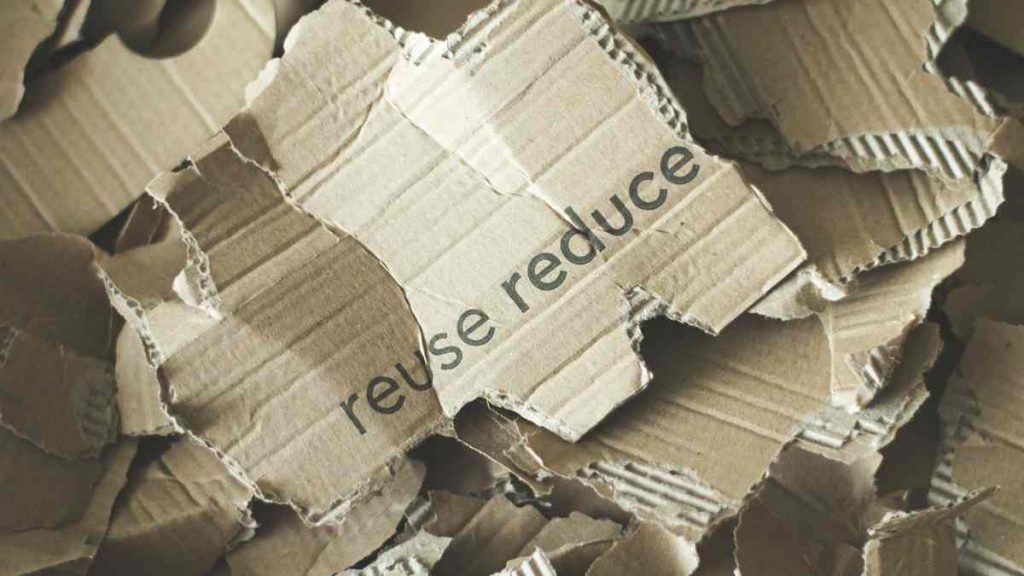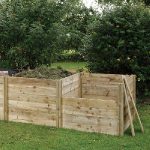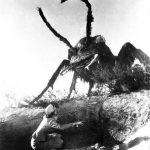Cardboard and paper can be a valuable resource for the gardener. Being rich in carbon it is useful for balancing compost ingredient. Used directly as part of a mulch system it suppresses weeds and improves soil quality.
What Cardboard & Paper Can You Use in Compost?
Basically all cardboard and paper can be used in the compost heap or the garden but some shiny cardboard and paper does take longer to breakdown. The shiny surface used to be made using kaolin, a natural clay material, but now it may well be made using plastic like polymers.
There’s no evidence that I’m aware of that shiny card will do any harm in a compost heap but I don’t like the idea of adding a possibly harmful plastic into the environment. Because of that I don’t use shiny cardboard and paper in compost, preferring to put it in the recycling bin.
Coloured matt cardboard or paper can be used. There used to be some concerns about the inks used in the past but these fears seem to have been groundless.
Cardboard packaging usually has plastic tape attached which is best removed before using in the garden. Never shred card with tape attached – thousands of non-degrading bits in the soil that may be harmful to the ecology.
To sum up: What Cardboard & Paper You Can Use in Composting
- Plain paper – white or coloured
- Newspaper
- Brown & coloured non-shiny cardboard (especially corrugated cardboard)
- Books – but not the cover or glossy photo pages.
- Tissues and kitchen paper
Carbon Nitrogen Ratio of Cardboard and Paper
Since both are made originally from trees, it’s no surprise that they’re very high in carbon. The carbon nitrogen ration of cardboard and paper is 200:1. This makes them useful for making compost where additional carbon rich ‘browns’ are needed to balance the nitrogen rich ‘greens’
Using Paper in Compost
I shred some paper types – like the standard paper all those letters and bills are printed on before adding to the compost heap. Newspaper and thin papers can just be separated into single sheets and crumpled up.
This helps the paper to break down quickly but it can cause a problem if the other materials in the heap are likely to clump or stick together. Grass clippings are a good example. When wet the paper acts like grass clippings in forming a clump that is impervious to air. This prevents aerobic composting taking place.
With green but stemmy materials like tomato or potato haulm, mixed well the paper provides balancing carbon without producing an airless, non-degrading lump.
Cardboard in the compost heap
Roughly torn into pieces cardboard will rot down well in the compost heap so long as it is mixed in with greens and not layered. Corrugated cardboard works even better because the corrugations hold it open until they decompose.
Cardboard, especially corrugated cardboard, insulates well which is very useful when you have a compost bin with openings in the sides like my bins made from pallets. In winter I just stuff layers of cardboard down the sides which helps hold the heat in the heap.
Sheets of cardboard layered over the top of a compost heap will help hold in warmth but also the water will tend to run off thereby stopping the heap from becoming waterlogged. As the sheets become soaked and start to disintegrate, just add more sheets. They can be incorporated when the heap is turned.
Garden Uses for Cardboard and Paper
Mulching with cardboard or paper and grass clippings.
Mulching in this way has a real benefits – weed suppression and soil improvement being the main ones. There’s a full article on the subject here: Mulching with cardboard and grass clippings.
Trench Lining
Runner bean trenches that hold water for the thirsty plants and provide nutrients for the growth benefit from being lined with a couple of layers of cardboard or three, even four, layers of newspaper.
This lining method, providing nutrients and retaining water, can be used to benefit cucurbits – marrows, courgettes, squash, pumpkins and cucumbers. Prepare the planting position by digging a hole of about 2 spades width and depth. Layer paper or cardboard at the base and even the sides. Then add well rotted manure or compost and backfill with soil.
Cucurbits don’t like being waterlogged but neither do they like drying out. Especially in dry areas of the country – like the eastern areas – holding water will help consistent growth.










